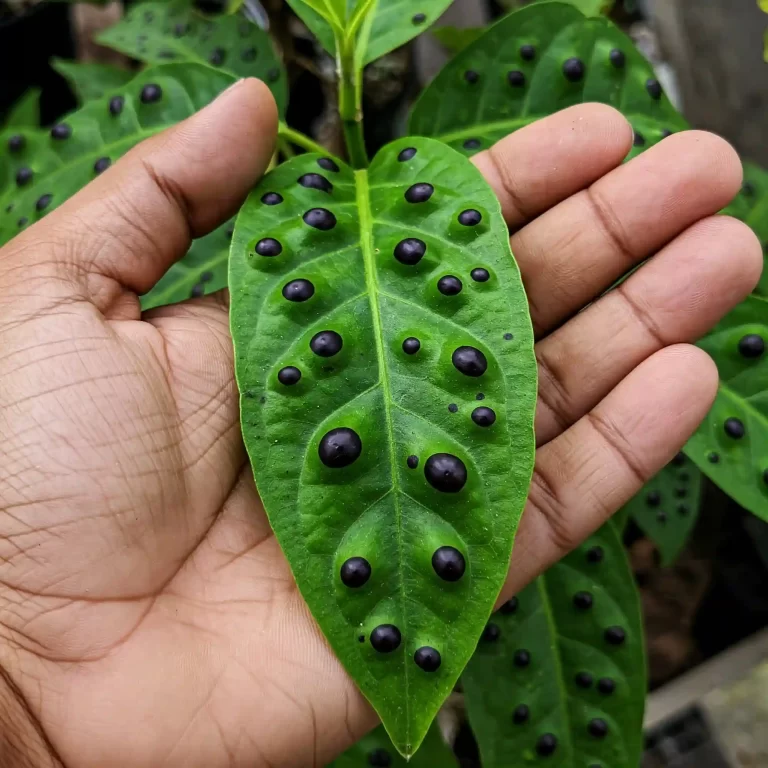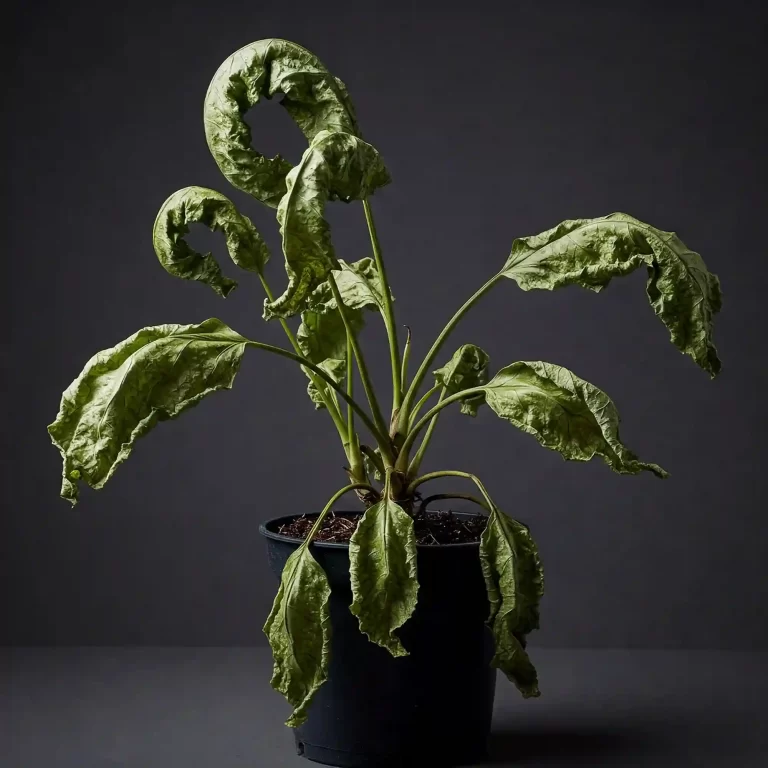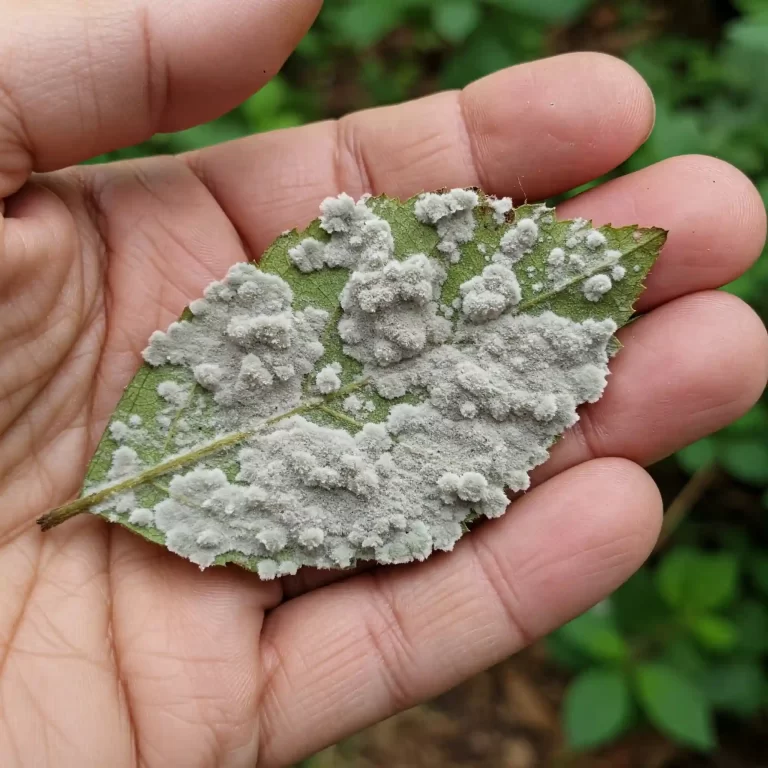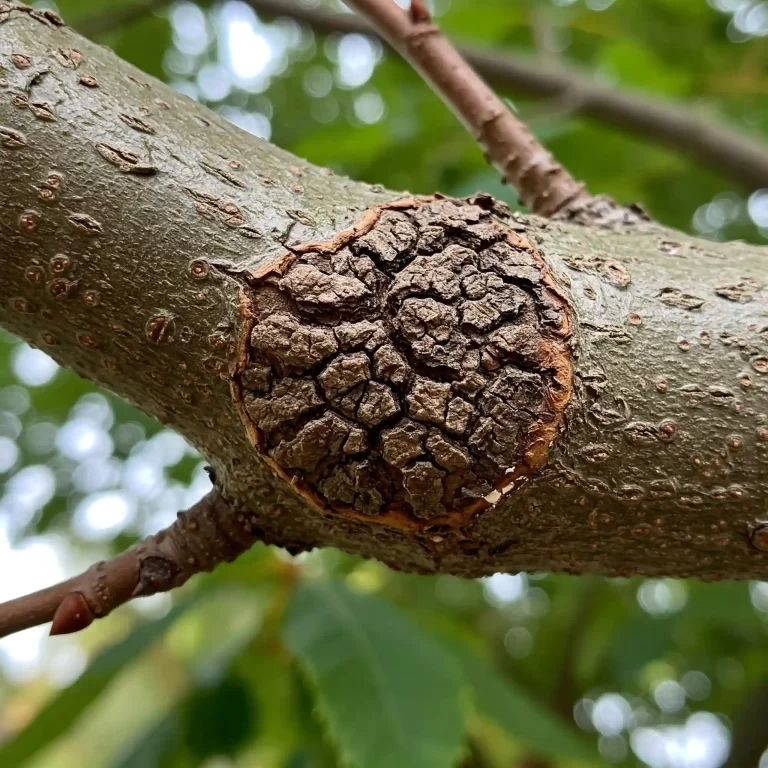| – Purple haze plants are popular for their purple-colored foliage or flowers, and include purple passion plant, aloe ‘purple haze’, and agastache ‘purple haze’. |
| – Purple passion plant is a tropical plant that needs moderate to bright indirect light, fairly humid environment, and average indoor temperatures. It also needs regular watering and fertilizing, and pruning to maintain its shape and propagate it. |
| – Aloe ‘purple haze’ is a succulent plant that thrives in full sun, well-drained soil, and infrequent water. It is not frost-hardy, so it needs to be brought indoors in cold climates. It can produce orange flowers if given enough light, and can be propagated from offsets or seeds. |
| – Agastache ‘purple haze’ is a perennial plant that produces lavender-blue flowers that attract hummingbirds and butterflies. It grows well in full sun, medium moisture, and well-drained soils. It tolerates some light shade, heat, and dry soils once established. It needs to be deadheaded to promote additional bloom, and can be propagated from division or seeds. |
Purple haze plants are a group of plants that have purple-colored foliage or flowers, and are often grown for their ornamental value and exotic appeal. Some of the most common purple haze plants are purple passion plant, aloe ‘purple haze’, and agastache ‘purple haze’. These plants have different characteristics and care requirements, but they all share a common trait: they add a splash of color and beauty to any garden or indoor space.
In this article, we will provide you with a complete guide on how to grow and care for purple haze plants, covering everything from water, light, nutrients, soil, pruning, pests, and propagation. We will also give you some tips and tricks on how to deal with common problems and issues that may affect your purple haze plants. By the end of this article, you will have all the information and knowledge you need to enjoy these stunning plants for years to come.
Purple Passion Plant Care
Purple passion plant (Gynura aurantiaca) is a tropical plant that has dark green leaves covered in dense, violet hair. It is also known as purple velvet plant, royal velvet plant, or purple velour plant. It belongs to the aster family, and can produce small, orange flowers that have a strong, unpleasant odor. However, most people grow this plant for its attractive foliage, and often remove the flowers as soon as they appear.
Purple passion plant is a fast-growing plant that can reach up to 2 feet in height and spread. It has a trailing habit, and can be grown in hanging baskets, pots, or as a ground cover. It is an easy-care plant that can add a touch of purple to any indoor space, as long as you provide it with the right conditions and care.
Water
Purple passion plant likes to be kept moist, but not soggy. You should water it when the top 25% of the soil feels dry to the touch, and make sure to drain any excess water from the saucer or pot. Overwatering can cause root rot, while underwatering can cause the leaves to wilt and drop. You can use a finger, a moisture meter, or a wooden skewer to check the soil moisture level.
Light
Purple passion plant prefers moderate to bright indirect light, and can tolerate some direct morning or evening sun. However, it should be protected from harsh, midday sun, as it can scorch the leaves and fade the purple color. Too little light can also cause the plant to lose its purple color and become leggy and weak. You can place your purple passion plant near a bright window, or use artificial lights to supplement the natural light.
Nutrients
Purple passion plant needs to be fertilized once a month during spring and summer, when it is actively growing. You can use an all-purpose liquid fertilizer diluted to half strength, and apply it after watering the plant. You should avoid fertilizing the plant during fall and winter, when it is dormant or semi-dormant. You should also avoid over-fertilizing the plant, as it can cause salt buildup in the soil and damage the roots.
Soil
Purple passion plant is not very fussy about the soil type, as long as it is well-drained, aerated, and slightly acidic. You can use a general potting mix, or make your own by mixing equal parts of peat moss, perlite, and vermiculite. You can also add some organic matter, such as compost, worm castings, or bat guano, to improve the soil fertility and structure. You should avoid using heavy, clayey, or alkaline soils, as they can cause waterlogging and nutrient imbalance.
Pruning
Purple passion plant needs to be pruned regularly to maintain its shape and size, and to encourage new growth and branching. You can use a sharp pair of scissors or pruning shears to trim off any dead, damaged, or diseased leaves and stems, as well as any unwanted flowers. You can also pinch off the tips of the stems to make the plant bushier and fuller. You should prune your purple passion plant in spring or summer, when it is growing vigorously.
Propagation
Purple passion plant is easy to propagate from stem cuttings. You can take 4 to 6 inch long cuttings from healthy, mature stems, and remove the lower leaves. You can then dip the cut end in some rooting hormone, and insert it into a moist potting mix. You can also place the cutting in a glass of water, and change the water every few days. You should keep the cutting in a warm, bright, and humid place, and mist it regularly. You should see roots forming in 2 to 4 weeks, and you can then transplant the cutting into a larger pot.
Problems and Pests
Purple passion plant is generally pest-resistant, but it can be attacked by some common houseplant pests, such as spider mites, mealybugs, aphids, and scale insects. These pests can suck the sap from the plant, and cause yellowing, curling, or dropping of the leaves. You can prevent or treat these pests by keeping the plant clean and healthy, and by spraying it with a solution of water and neem oil, insecticidal soap, or rubbing alcohol. You should also inspect the plant regularly, and remove any infected parts.
Purple passion plant can also suffer from some fungal or bacterial diseases, such as root rot, stem rot, leaf spot, or powdery mildew. These diseases can cause wilting, browning, or blackening of the leaves and stems, and can eventually kill the plant. You can prevent or treat these diseases by avoiding overwatering or underwatering the plant, and by providing good drainage, aeration, and ventilation. You can also use a fungicide or a bactericide to treat the infected parts.
Purple passion plant is a stunning plant that can add a touch of purple to any indoor space. It is easy to grow and care for, as long as you provide it with the right water, light, nutrients, soil, pruning, and propagation. It is also pest-resistant, and can tolerate some minor problems and issues. With proper care and attention, you can enjoy this plant for years to come.
Aloe ‘Purple Haze’ Care
Aloe ‘Purple Haze’ is a succulent plant that has green leaves with purple spots and edges. It is a hybrid of Aloe nobilis and Aloe brevifolia, and belongs to the asphodel family. It is also known as purple haze aloe, or purple haze aloe vera. It is a low-growing plant that can reach up to 12 inches in height and spread. It has a rosette shape, and can produce orange flowers on a tall spike if given enough light.
Aloe ‘Purple Haze’ is a drought-tolerant plant that thrives in full sun, well-drained soil, and infrequent water. It is not frost-hardy, so it needs to be brought indoors in cold climates. It is an easy-care plant that can add a touch of purple to any garden or indoor space, as long as you provide it with the right conditions and care.
Water
Aloe ‘Purple Haze’ likes to be watered deeply, but infrequently. You should water it when the soil feels completely dry to the touch, and make sure to drain any excess water from the saucer or pot. Overwatering can cause root rot, while underwatering can cause the leaves to shrivel and brown. You can use a finger, a moisture meter, or a wooden skewer to check the soil moisture level.
Light
Aloe ‘Purple Haze’ loves full sun, and can tolerate some partial shade. However, it should be protected from intense, midday sun, as it can burn the leaves and fade the purple color. Too little light can also cause the plant to lose its purple color and become leggy and weak. You can place your aloe ‘purple haze’ in a sunny spot, such as a south-facing or west-facing window, or use artificial lights to supplement the natural light.
Nutrients
Aloe ‘Purple Haze’ does not need much fertilizer, as it can get most of the nutrients it needs from the soil. You can fertilize it once or twice a year, during spring or summer, when it is actively growing. You can use a balanced liquid fertilizer diluted to a quarter strength, and apply it after watering the plant. You should avoid fertilizing the plant during fall and winter, when it is dormant or semi-dormant. You should also avoid over-fertilizing the plant, as it can cause salt buildup in the soil and damage the roots.
Soil
Aloe ‘Purple Haze’ needs a well-drained, sandy, and slightly acidic soil. You can use a cactus or succulent potting mix, or make your own by mixing equal parts of sand, perlite, and peat moss. You can also add some gravel, pumice, or coarse grit to improve the drainage and aeration. You should avoid using heavy, clayey, or alkaline soils, as they can cause waterlogging and nutrient imbalance.
Pruning
Aloe ‘Purple Haze’ does not need much pruning, as it has a compact and neat shape. You can use a sharp pair of scissors or pruning shears to trim off any dead, damaged, or diseased leaves and stems, as well as any unwanted flowers. You can also remove any offsets or pups that grow around the base of the plant, and use them to propagate new plants. You should prune your aloe ‘purple haze’ in spring or summer, when it is growing vigorously.
Propagation
Aloe ‘Purple Haze’ is easy to propagate from offsets or seeds. You can remove the offsets or pups that grow around the base of the plant, and let them dry for a few days. You can then plant them in a moist potting mix, and water them lightly. You should keep them in a warm, bright, and dry place, and mist them occasionally. You should see roots forming in 2 to 4 weeks, and you can then transplant them into a larger pot.
You can also propagate aloe ‘purple haze’ from seeds, if you are lucky enough to get them from the flowers. You can collect the seeds from the dried flower pods, and sow them in a shallow tray filled with a moist potting mix. You can cover the tray with a plastic wrap, and place it in a warm, bright, and humid place. You should mist the tray regularly, and remove the plastic wrap once the seeds germinate. You should see seedlings sprouting in 4 to 6 weeks, and you can then transplant them into individual pots.
Problems and Pests
Aloe ‘Purple Haze’ is generally pest-resistant, but it can be attacked by some common succulent pests, such as mealybugs, scale insects, spider mites, and thrips. These pests can suck the sap from the plant, and cause yellowing, curling, or dropping of the leaves. You can prevent or treat these pests by keeping the plant clean and healthy, and by spraying it with a solution of water and neem oil, insecticidal soap, or rubbing alcohol. You should also inspect the plant regularly, and remove any infected parts.
Aloe ‘Purple Haze’ can also suffer from some fungal or bacterial diseases, such as root rot, stem rot, leaf spot, or powdery mildew. These diseases can cause wilting, browning, or blackening of the leaves and stems, and can eventually kill the plant. You can prevent or treat these diseases by avoiding overwatering or underwatering the plant, and by providing good drainage, aeration, and ventilation. You can also use a fungicide or a bactericide to treat the infected parts.
Aloe ‘Purple Haze’ is a stunning plant that can add a touch of purple to any garden or indoor space. It is easy to grow and care for, as long as you provide it with the right water, light, nutrients, soil, pruning, and propagation. It is also drought-tolerant, and can tolerate some minor problems and issues. With proper care and attention, you can enjoy this plant for years to come.
Agastache ‘Purple Haze’ Care
Agastache ‘Purple Haze’ is a perennial plant that produces lavender-blue flowers that attract hummingbirds and butterflies. It is a hybrid of Agastache rugosa and Agastache foeniculum, and belongs to the mint family. It is also known as purple haze hyssop, purple haze anise hyssop, or purple haze giant hyssop. It is a tall and bushy plant that can reach up to 3 feet in height and spread. It has a minty and licorice-like scent, and can be used as a culinary or medicinal herb.
Agastache ‘Purple Haze’ is a hardy and adaptable plant that grows well in full sun, medium moisture, and well-drained soils. It tolerates some light shade, heat, and dry soils once established. It needs to be deadheaded to promote additional bloom, and can be propagated from division or seeds. It is an easy-care plant that can add a touch of purple to any garden or outdoor space, as long as you provide it with the right conditions and care.
Water
Agastache ‘Purple Haze’ likes to be watered regularly, but not excessively. You should water it when the top 2 inches of the soil feel dry to the touch, and make sure to drain any excess water from the saucer or pot. Overwatering can cause root rot, while underwatering can cause the flowers to fade and drop. You can use a finger, a moisture meter, or a wooden skewer to check the soil moisture level.
Light
Agastache ‘Purple Haze’ loves full sun, and can tolerate some partial shade. However, it should be protected from strong, midday sun, as it can scorch the flowers and leaves. Too little light can also cause the plant to become leggy and weak, and produce fewer flowers. You can place your agastache ‘purple haze’ in a sunny spot, such as a south-facing or west-facing window, or use artificial lights to supplement the natural light.
Nutrients
Agastache ‘Purple Haze’ does not need much fertilizer, as it can get most of the nutrients it needs from the soil. You can fertilize it once or twice a year, during spring or summer, when it is actively growing. You can use a balanced liquid fertilizer diluted to a quarter strength, and apply it after watering the plant. You should avoid fertilizing the plant during fall and winter, when it is dormant or semi-dormant. You should also avoid over-fertilizing the plant, as it can cause salt buildup in the soil and damage the roots.
Soil
Agastache ‘Purple Haze’ needs a well-drained, loamy, and slightly acidic soil. You can use a general potting mix, or make your own by mixing equal parts of compost, sand, and perlite. You can also add some organic matter, such as worm castings, bone meal, or blood meal, to improve the soil fertility and structure. You should avoid using heavy, clayey, or alkaline soils, as they can cause waterlogging and nutrient imbalance.
Pruning
Agastache ‘Purple Haze’ needs to be pruned regularly to maintain its shape and size, and to encourage new growth and flowering. You can use a sharp pair of scissors or pruning shears to trim off any dead, damaged, or diseased flowers and stems, as well as any spent or faded flowers. You can also cut back the plant by one-third to one-half in late fall or early spring, to stimulate new growth and branching. You should prune your agastache ‘purple haze’ in spring or summer, when it is growing vigorously.
Propagation
Agastache ‘Purple Haze’ is easy to propagate from division or seeds. You can divide the plant in spring or fall, when it is dormant or semi-dormant. You can use a sharp knife or spade to cut the plant into smaller sections, and make sure each section has some roots and stems. You can then plant them in a moist potting mix, and water them lightly. You should keep them in a warm, bright, and dry place, and mist them occasionally. You should see new growth in 2 to 4 weeks, and you can then transplant them into a larger pot or the ground.
You can also propagate agastache ‘purple haze’ from seeds, if you are lucky enough to get them from the flowers. You can collect the seeds from the dried flower pods, and sow them in a shallow tray filled with a moist potting mix. You can cover the tray with a plastic wrap, and place it in a warm, bright, and humid place. You should mist the tray regularly, and remove the plastic wrap once the seeds germinate. You should see seedlings sprouting in 4 to 6 weeks, and you can then transplant them into individual pots or the ground.
Problems and Pests
Agastache ‘Purple Haze’ is generally pest-resistant, but it can be attacked by some common garden pests, such as deer, rabbits, squirrels, birds, bees, and caterpillars. These pests can eat the flowers, leaves, and stems, and cause damage or loss of the plant. You can prevent or treat these pests by keeping the plant healthy and strong, and by using some physical barriers, such as fences, nets, or cages. You can also use some repellents, such as garlic, pepper, or vinegar, to deter the pests.
Agastache ‘Purple Haze’ can also suffer from some fungal or bacterial diseases, such as powdery mildew, rust, or leaf spot. These diseases can cause white, brown, or black spots on the flowers and leaves, and can reduce the plant’s vigor and beauty. You can prevent or treat these diseases by avoiding overwatering or underwatering the plant, and by providing good drainage, aeration, and ventilation. You can also use a fungicide or a bactericide to treat the infected parts.
Agastache ‘Purple Haze’ is a stunning plant that can add a touch of purple to any garden or outdoor space. It is easy to grow and care for, as long as you provide it with the right water, light, nutrients, soil, pruning, and propagation. It is also hardy and adaptable, and can tolerate some minor problems and issues. With proper care and attention, you can enjoy this plant for years to come.
Conclusion
Purple haze plants are a group of plants that have purple-colored foliage or flowers, and are often grown for their ornamental value and exotic appeal. Some of the most common purple haze plants are purple passion plant, aloe ‘purple haze’, and agastache ‘purple haze’. These plants have different characteristics and care requirements, but they all share a common trait: they add a splash of color and beauty to any garden or indoor space.
In this article, we have provided you with a complete guide on how to grow and care for purple haze plants, covering everything from water, light, nutrients, soil, pruning, pests, and propagation. We have also given you some tips and tricks on how to deal with common problems and issues that may affect your purple haze plants. By following this guide, you will have all the information and knowledge you need to enjoy these stunning plants for years to come.
We hope you have found this article helpful and informative. If you have any questions, comments, or feedback, please feel free to leave them below. We would love to hear from you. Thank you for reading, and happy gardening!



